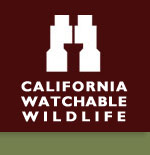

| Visitation: unknown | ||
| Area: 75 Acres | ||
| Lat: 38.405787 | ||
| Lon: 122.815502 | ||
| Nearby Services | ||
| Site Facilities | ||
| Join Our Mailing List |
|
For Email Marketing you can trust
|
Top Banner Photo Credits
Pam Starr
Alyn Robert Brereton
Julie MacKinnon
Linda Pittman
Parham Pourahmad
Larry Whiting
Randall Finley
Pam Starr
Alyn Robert Brereton
Julie MacKinnon
Linda Pittman
Parham Pourahmad
Larry Whiting
Randall Finley
© 2008-2024 California Watchable Wildlife and Blue Cat Studio, Inc.
| Laguna Wetlands Preserve - Site # 327 | |||
| An important stopover for thousands of birds migrating along the Pacific Flyway, the Laguna is the second largest freshwater marsh in Northern California. | |||
 | Regional - worth visiting if you are already in the area. They may be located farther from populated areas or with more limited wildlife species. | ||
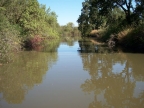
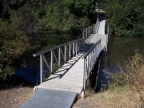
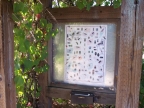
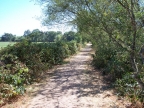
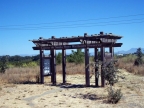
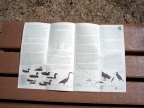
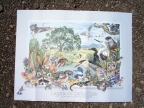
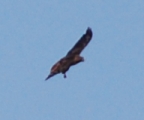
| |||
| Background: | The Laguna Wetlands Preserve is currently the only public park where people can view the main channel of the Laguna de Santa Rosa. The Laguna is the second largest freshwater marsh in Northern California. There are 200 species of birds found in the Laguna, including bald eagle, osprey and white pelican and it provides an important stopover for thousands of birds migrating along the Pacific Flyway. The Laguna de Santa Rosa is a unique ecological system that is comprised of a mosaic of open water, wetland,riparian forest, oak woodland, grassland and vernal pools. | ||
| Just over forty years ago, the Preserve was a dump site, and the ponds were part of the City of Sebastopol's sewage treatment plant. The preserve represents a community effort to reclaim valuable habitat. Archeological data also indicates that Southern Pomo had seasonal dwellings in the area and analysis of obsidian tools found nearby indicate that humans have dwelled in the area for at least 10,000 years. While there are not currently intrepretive signs telling this and other Laguna stories, eventually there will be. | |||
| The Habitat: | Riparian corridor along Laguna channel 25%; visiable farm land & recreation park, 10%; open water ponds (seasonal)40%; oak savannah in meadowlark field, 15% (seasonal when floating bridge is in.) | ||
| The Experience: | The Laguna is a unique ecological system comprised of a mosaic of open water, wetland, riparian forest, oak woodland, grassland and vernal pools. The Laguna is Sonoma County's richest area of wildlife habitat, and the most biologically diverse part of the county, having been called a "national treasure" for its ecological wealth. A number of rare and endangered species occur in the Laguna, including three endangered plants that are endemic. From about 1870 to 1990 water quality and biota deteriorated in the Laguna, due to intensification of urban development and associated agricultural encroachment into the floodplain. By 1989 over 92 percent of the Laguna's historic riparian habitat had been lost, and its water quality had reached critically poor levels. In the 1990s the trend began to reverse as public awareness increased and extensive restoration efforts were implemented. Notwithstanding the large historical reduction in resource extent, the Laguna de Santa Rosa is presently the second largest freshwater wetland in coastal Northern California and still habitat to over 200 species of birds, bald and golden eagle, osprey, mountain lion, river otter, coyote, bobcat, mink and gray fox. In addition to the habitat and its significance to wildlife, the Laguna provides critical ecosystem services to the populations of Cotati, Rohnert Park, Santa Rosa, Sebastopol, Windsor, and Guerneville by capturing and slowing of stormwaters during flood events. | ||
| Wildlife and Where to Find It: | Hard pan, flat, accessible trails. Additionally in the summer there is a floating bridge over the main channel of the Laguna that is not wheelchair accessable. | ||
| Viewing Tips: | Spring is a peak time for birdwatching around the Laguna. Spring also provides increased chances for spotting other wildlife, including: western pond turtles,garter & gopher snakes, river otter. | ||
| Site Notes: | Entering the Preserve near the north pergola and pausing at the amphitheater provides the opportunity to orient and to begin experiencing the Laguna de Santa Rosa. Look overhead for circling flocks of white pelicans and passing Canada geese. In the spring watch for cliff swallows collecting mud for their nests and capturing insects to nourish chicks. To the east, look for cinnamon teal, mallards and other waterfowl in the pond that is ringed by cattails and tules, the springtime homes to vociferous groups of red-winged blackbirds. Continue walking north and notice the Coast Range on the horizon while witnessing Sonoma County's agricultural heritage and the accompanying bird life, including cattle and great egrets in the field. Rounding the bend and walking east, notice the berry canes and try to distinguish between the native California and the non-native Himilayan blackberry shrubs. Along each trail regard the Valley oaks, willows, box elder, hawthorne, Oregon ash, Fremont cottonwood, black walnut, coyote brush, and California rose; all important tree and shrub species for their habitat and food value, erosion prevention and bank stabilization properties. Round the next bend and proceed south. After about 400 feet, take the left leads between the winter pond and the main channel of the Laguna. Here you may get to see double crested cormorants, pied bill grebes, great blue herons or great egrets fishing. Enjoy the view, be patient and see what appears. You may get lucky and glimpse common merganser, osprey, green heron, river otter, or even western pond turtles. Follow the trail, proceed along Willow Way. If the pontoon bridge is in, be sure to cross it and enjoy a walk in Meadowlark field. Here red tailed and red shouldered hawks abound, along with acorn woodpeckers and other oak savannah bird residents. | ||
| Nearby Viewing Sites: | Annadel State Park, Ragle Ranch Regional Park | ||
| Festivals & Events: | Field trips. Laguna Foundation offers a program for elementary school children: Learning Laguna, on spring & fall weekday mornings. Local high school groups also visit along with various community groups. No wildlife festivals but the ajacent Community Center does have a Celtic music festival, other music festivals, holiday various craft festivals, etc. http://www.seb.org/ | ||
| Visitor Information: | Sebastopol Area Chamber of Commerce - (707) 823-3032 - http://www.sebastopol.org | ||
| Viewing Site Hours of Operation are: | |||
| Staff On-site: | No | ||
| Open: | Everday | ||
| Hours: | Sunrise to 1 hour after sunset | ||
| Year Round: | Yes | ||
| Road Information: | |||
| Road Hazards: None | |||
| Parking Fee: No | |||
| Proximity to viewing area:adjacent | |||
| Parking Notes: | |||
| How to Get There: | From Hwy 101 in Santa Rosa, exit at Hwy 12 west toward Sebastopol. Travel 6.5 miles to Morris St; turn north (right) and proceed to parking area behind the Sebastopol Community Center Youth Annex. | ||
| Contact Information | |||
| Managing Agency: | City of Sebastopol | ||
| Agency Site URL: | http://www.lagunadesantarosa.org | ||
| Physical Address: | Main entrance behind 425 Morris St. Sebastopol, CA 95472 |
Agency 2: | 900 Sanford Road Sebastopol, CA 95401 |
| Manager Phone: | (707) 823-6167 | Contact Us: | by Email |
| Site Phone: | (707) 527-9277 | ||
| County: | Sonoma | ||
| Addition Website: | http://www.ci.sebastopol.ca.us/lagunawetlandspreserve.shtml | ||
